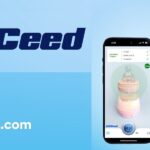If you place popups on your website to collect new subscribers or motivate visitors with bonuses for purchases, you should pay attention to mobile responsiveness. Many potential customers visit your site from smartphones, so every detail of interacting with your company should be convenient.
Creating a mobile-friendly popup is necessary for online businesses that don’t want to lose customers. This article will discuss how to make your popups mobile-friendly to retain existing clients and attract new ones.
Why Mobile-Friendly Popups Are Essential
You can’t simply copy a desktop version of the popup and use it for your mobile site. The design needs to be different since mobile screens are smaller, and there’s no mouse cursor. You must consider the fonts, images, and how easily a user can close the popup. Additionally, there are specific rules for mobile users’ experience. According to Google’s guidelines, popups should not completely cover the page content. Mobile popups should enhance the user’s interaction with your site, not disrupt or complicate it.
Statistics show mobile popups have higher engagement and conversion rates than desktop ones. That’s why it’s worth putting in the effort to ensure your mobile popups perform effectively.
Key Features of an Effective Mobile-Friendly Popup
Let’s reveal things you should focus on when designing mobile popups.
Responsive Design
Since companies often don’t create popups from scratch but use popup builders, this aspect largely depends on the platform’s functionality. Some builders automatically adapt popups to different screen sizes. Additionally, many offer a preview feature, allowing you to see how your popup will look on screens of various sizes.
Minimalist Content
This point stems from the limited space available on mobile screens. Include only the essentials in your popup: the key message you want to communicate to the visitor and a clear CTA button. Fonts must also be more extensive than the desktop version to ensure readability.
Exit Intent on Mobile
On desktops, exit-intent triggers when users move their cursor outside the website area to close it. But how can this be achieved on mobile? You can set the popup to trigger when a user is inactive for a certain period or presses the back button.
Thumb-Friendly Design
The close button for the popup should never be hidden. Doing so won’t improve your conversions; it’s more likely to irritate visitors. Design the close button to be easily visible and conveniently located for users to tap. The same applies to the CTA button—make it easily accessible and thumb-friendly.
Steps to Create a Mobile-Friendly Popup
- Choose the Right Tool: Start by choosing the exemplary service. You can create mobile popups without the need for a designer or developer. Some popup builders even offer free plans, which are great for evaluating the platform’s usability and functionality. However, free versions usually come with certain limitations.
- Set Clear Objectives: You can create popups for various purposes: collecting new subscribers, gathering their feedback and additional data, or drawing attention to specific products or pages. These goals will influence your popups’ design, timing, and segmentation. It’s helpful when a popup builder offers advanced customization options and detailed rules for setting up their display.
- Set up triggers. Choose popup services that offer a variety of rules for trigger display. This will help you create and configure mobile popups that attract new subscribers and customers rather than scare them away or annoy them. For instance, you can display a popup when someone visits your site from a specific source, like social media, if you’ve launched a campaign and directed traffic to your website. Alternatively, set popups to show only to visitors from specific geographic regions if the special offer in the popup is valid only in that area.
- A/B Testing: Don’t settle for just one popup version. Think about what might engage your site visitors more, and test it. For example, try different CTAs, display conditions, bonuses, and more. Some popup builders include A/B testing tools among their features, so you won’t need additional services. You’ll simply create the popups for testing, and over time, you’ll receive automated results showing which version performed better.
Conclusion
The effectiveness of your popups depends on how well you configure them for the mobile version of your site. Many potential subscribers and customers will access the mobile version, so popups must be responsive. This applies to both their design and display conditions. Users should find it convenient to interact with the popup—whether clicking CTA or close buttons or entering data into fields. Carefully set up display conditions and test your popups to find an effective approach.
Published by Stephanie M.


















